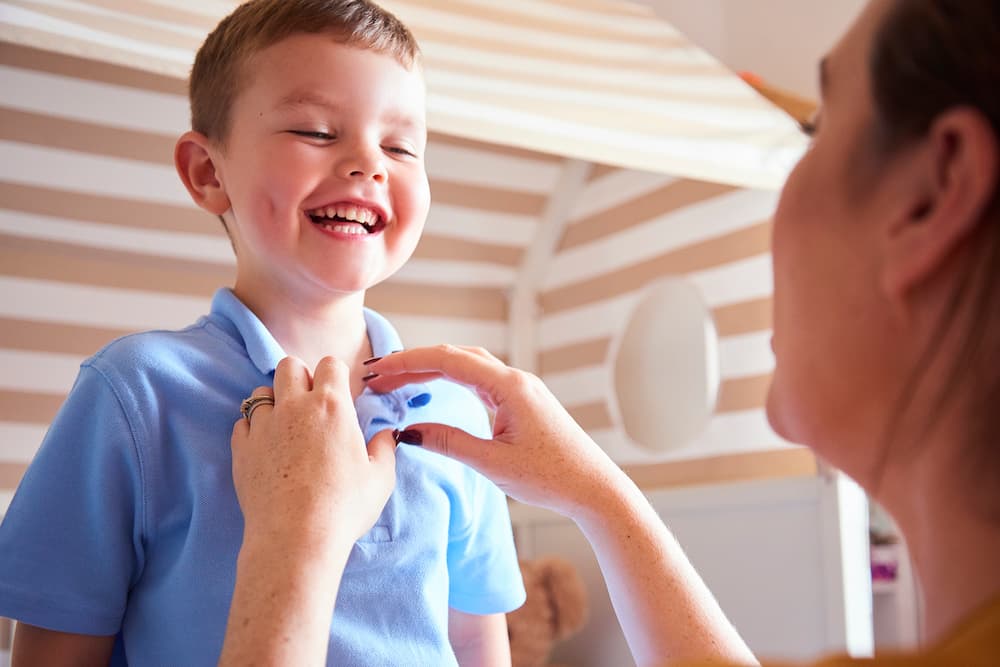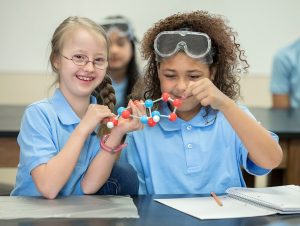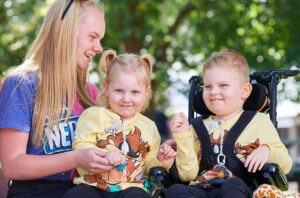
Starting primary school
Going to school is an exciting time for children and families. Planning ahead is the best way to make sure your child has the right supports from day one.
1. Enrol your child
Start by choosing the school you would like your child to attend and complete the enrolment process.
Remember schools cannot discriminate against students with disability.
Once your child’s enrolment is confirmed then you can work with your child’s therapists, kindergarten and school to make sure your child is supported when they start school.
2. What the kindergarten will do
Transition Statement
The kindergarten will put together a Transition Statement. This includes information about your child’s needs and strategies to support their learning.
You will be asked to complete the parent section where you can provide information about your child. The kindergarten will send the final copy to the primary school and give you a copy in Term 4.
Meeting to plan for the transition
The kindergarten will set up a meeting with you, the kindergarten teacher, therapists and someone from the primary school. This is the time to share what your child is good at, what they like and things that help your child learn.
You will also talk about how to best support your child and the next steps to plan for the transition to school, such as applying for funding. This meeting generally happens in Term 3.
3. What the school will do
Apply for funding
If your child is eligible for school-based funding the school will complete the application process.
For most students this process will commence once the student has started school.
For some students with very high needs, this process can commence in Term 4 before the student starts at school.
The Victorian Government has announced a new way of funding students with disability called Disability Inclusion. Over the next few years it will replace the Program for Students for Disabilities (PSD).
This is the timeframe when school areas are moving to Disability Inclusion.
| 2021 | 2022 | 2023 | 2024 | 2025 |
|---|---|---|---|---|
| Bayside Peninsula | Outer Eastern Melbourne | Inner Gippsland | North Eastern Melbourne | Hume Moreland |
| Barwon | Central Highlands | Ovens Murray | Southern Melbourne | Outer Gippsland |
| Loddon Campaspe | Mallee | Western Melbourne | Brimbank Melton | Wimmera South West |
| Goulburn | Inner Eastern Melbourne |
If your child’s school is in a Disability Inclusion area, you can read our fact sheet Funding in government schools – Disability Inclusion.
If your child’s school has not yet changed to Disability Inclusion, you can read our fact sheet Funding in government schools – Program for Students with Disabilities.
Have a Student Support Group meeting
This meeting will include you, the Principal or their representative, school transition coordinator,
and possibly Prep teachers. In addition to gathering information for a funding application, this meeting
can be used to discuss reasonable adjustments. You can also discuss what will help your child during
the transition.
4. Put in place reasonable adjustments
Reasonable adjustments can be put in place to support your child as they start school.
These might include:
- Extra transition visits
- Getting to the classroom before everyone else arrives
- A visual schedule of what will happen during the transition visit
- A visual schedule of what will happen on the first day of school
- Making sure your child is placed with children from kindergarten that they connect with
You know your child best. You can make suggestions about what will work best for them.
The meeting will also get your input into plans that will help support your child through transition and into Term 1. This meeting and planning generally happens in Terms 3 and 4 of the year before your child starts school.
Plans to support your child
The school may create a number of plans so that all school staff can access the right information about your child and put in place agreed reasonable adjustments:
- Individual Education Plan for your child’s learning goals and how the school will support these
- Student Health Support Plan for medical and personal care needs
- Behaviour Support Plan for behaviour support needs
Transition days
All new preps attend a number of visits to school during Term 4 so they feel more familiar with the classroom, teachers and practicalities such as where the toilets are.
Remember, you can make suggestions about what will make these transition visits a success for your child – such as having additional visits, letting your child visit the classroom before everyone arrives or providing a visual schedule.
5. What you can do to support your child
- Follow up with your child’s kindergarten or school if they haven’t contacted you by the start of Term 3
- Share information and attend meetings
- Help your child feel comfortable at school – extra visits, playing in the playground after school and on the weekend
- Use social stories to help your child to understand school routines
- Practise skills at home such as packing and unpacking their bag, using their sun hat, going to the toilet, fastening their clothing, washing their hands, and opening lunch boxes and drink bottles
- Arrange playdates with other children who will be in your child’s class
- Ask your child’s teacher what the routine is for the day so that you both know what to expect
- Get involved in the school community
6. Once school starts
Good communication helps the school to work with you to support your child’s learning and wellbeing. This can include informal communication such as a quick chat at pick-up or drop-off times as well as formal communication through Student Support Group meetings.
Ask your child’s teacher if they are happy to communicate by email or make an appointment to discuss a particular issue in more detail. Find a way of communicating that suits you both.
Let the school know if there is anything happening at home that might affect your child at school. The school should also let you know if your child is having any difficulties at school.
A communication book can be a useful way to share information. This is a book that travels with your child from home to school and back. Both you and the teacher can write in the book about how your child is going.
Ask for a Student Support Group meeting for early in Term 1 to find out how your child is settling in and continue to develop their Individual Education Plan.



